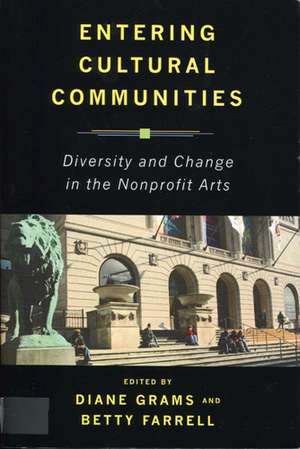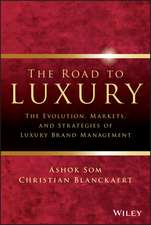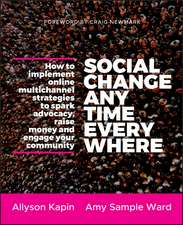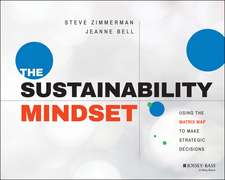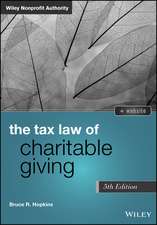Entering Cultural Communities: Diversity and Change in the Nonprofit Arts: Rutgers Series: The Public Life of the Arts
Editat de Professor Diane Grams, Professor Betty Farrell Contribuţii de Professor D. Carroll Joynes, Professor David Karraker, Professor Morris Fred, Professor Wendy Norrisen Limba Engleză Paperback – 26 mar 2008
Arts organizations once sought patrons primarily from among the wealthy and well educated, but for many decades now they have revised their goals as they seek to broaden their audiences. Today, museums, orchestras, dance companies, theaters, and community cultural centers try to involve a variety of people in the arts. They strive to attract a more racially and ethnically diverse group of people, those from a broader range of economic backgrounds, new immigrants, families, and youth.
The chapters in this book draw on interviews with leaders, staff, volunteers, and audience members from eighty-five nonprofit cultural organizations to explore how they are trying to increase participation and the extent to which they have been successful. The insiders' accounts point to the opportunities and challenges involved in such efforts, from the reinvention of programs and creation of new activities, to the addition of new departments and staff dynamics, to partnerships with new groups. The authors differentiate between "relational" and "transactional" practices, the former term describing efforts to build connections with local communities and the latter describing efforts to create new consumer markets for cultural products. In both cases, arts leaders report that, although positive results are difficult to measure conclusively, long-term efforts bring better outcomes than short-term activities.
The organizations discussed include large, medium, and small nonprofits located in urban, suburban, and rural areas—from large institutions such as the Smithsonian, the Walker Art Center, the Museum of Fine Arts Houston, and the San Francisco Symphony to many cultural organizations that are smaller, but often known nationally for their innovative work, such as AS220, The Loft Literary Center, Armory Center for the Arts, Appalshop, and the Western Folklife Center.
The chapters in this book draw on interviews with leaders, staff, volunteers, and audience members from eighty-five nonprofit cultural organizations to explore how they are trying to increase participation and the extent to which they have been successful. The insiders' accounts point to the opportunities and challenges involved in such efforts, from the reinvention of programs and creation of new activities, to the addition of new departments and staff dynamics, to partnerships with new groups. The authors differentiate between "relational" and "transactional" practices, the former term describing efforts to build connections with local communities and the latter describing efforts to create new consumer markets for cultural products. In both cases, arts leaders report that, although positive results are difficult to measure conclusively, long-term efforts bring better outcomes than short-term activities.
The organizations discussed include large, medium, and small nonprofits located in urban, suburban, and rural areas—from large institutions such as the Smithsonian, the Walker Art Center, the Museum of Fine Arts Houston, and the San Francisco Symphony to many cultural organizations that are smaller, but often known nationally for their innovative work, such as AS220, The Loft Literary Center, Armory Center for the Arts, Appalshop, and the Western Folklife Center.
Preț: 292.29 lei
Nou
Puncte Express: 438
Preț estimativ în valută:
55.93€ • 58.39$ • 46.29£
55.93€ • 58.39$ • 46.29£
Carte tipărită la comandă
Livrare economică 05-19 aprilie
Preluare comenzi: 021 569.72.76
Specificații
ISBN-13: 9780813542171
ISBN-10: 0813542170
Pagini: 292
Ilustrații: 19
Dimensiuni: 159 x 235 x 15 mm
Greutate: 0.45 kg
Ediția:None
Editura: Rutgers University Press
Colecția Rutgers University Press
Seria Rutgers Series: The Public Life of the Arts
ISBN-10: 0813542170
Pagini: 292
Ilustrații: 19
Dimensiuni: 159 x 235 x 15 mm
Greutate: 0.45 kg
Ediția:None
Editura: Rutgers University Press
Colecția Rutgers University Press
Seria Rutgers Series: The Public Life of the Arts
Notă biografică
Diane Grams, a sociologist and former museum director, directed this project through the Cultural Policy Center at The University of Chicago.
Betty Farrell, associate director of the M.A. Program in Social Sciences and senior lecturer at The University of Chicago, works on the sociology of culture.
Betty Farrell, associate director of the M.A. Program in Social Sciences and senior lecturer at The University of Chicago, works on the sociology of culture.
Cuprins
Building arts participation through transactions, relationships, or both / Diane Grams
Changing culture and practices inside organizations / Betty Farrell
Leaders bridging the culture gap / D. Carroll Joynes and Diane Grams
Partnering with purpose / David Karraker and Diane Grams
Building youth participation / Betty Farrell
Diversifying the arts: bringing in race and ethnic perspectives / Morris Fred and Betty Farrell
High-tech transactions and cyber-communities / Wendy Leigh Norris and Niane Grams
Creative reinvention: from "one book" to "animals on parade"
how good ideas spread like wildfire / Diane Grams
Achieving success / Diane Grams
Changing culture and practices inside organizations / Betty Farrell
Leaders bridging the culture gap / D. Carroll Joynes and Diane Grams
Partnering with purpose / David Karraker and Diane Grams
Building youth participation / Betty Farrell
Diversifying the arts: bringing in race and ethnic perspectives / Morris Fred and Betty Farrell
High-tech transactions and cyber-communities / Wendy Leigh Norris and Niane Grams
Creative reinvention: from "one book" to "animals on parade"
how good ideas spread like wildfire / Diane Grams
Achieving success / Diane Grams
Recenzii
A magnificent and timely account of how cultural institutions grapple with engaging their audience. Brimming with ideas and data and beautifully written, this book is perfect for students, practitioners, and researchers.
The efforts of nonprofit arts organizations to diversify the arts are, again, one of the most important topics of contemporary nonprofit and cultural policy research. Grams and Farrell's Entering Cultural Communities is the first book to approach many different aspects of diversifying the arts, and they do so capably and thoroughly with a wonderful set of data. Every researcher, policy maker, and practitioner in or involved with the nonprofit arts should read their book.
Descriere
Arts organizations once sought patrons primarily from among the wealthy and well educated, but for many decades now they have revised their goals as they seek to broaden their audiences. Today, museums, orchestras, dance companies, theaters, and community cultural centers try to involve a variety of people in the arts. They strive to attract a more racially and ethnically diverse group of people, those from a broader range of economic backgrounds, new immigrants, families, and youth.
The chapters in this book draw on interviews with leaders, staff, volunteers, and audience members from eighty-five nonprofit cultural organizations to explore how they are trying to increase participation and the extent to which they have been successful. The insiders' accounts point to the opportunities and challenges involved in such efforts, from the reinvention of programs and creation of new activities, to the addition of new departments and staff dynamics, to partnerships with new groups. The authors differentiate between "relational" and "transactional" practices, the former term describing efforts to build connections with local communities and the latter describing efforts to create new consumer markets for cultural products. In both cases, arts leaders report that, although positive results are difficult to measure conclusively, long-term efforts bring better outcomes than short-term activities.
The organizations discussed include large, medium, and small nonprofits located in urban, suburban, and rural areas—from large institutions such as the Smithsonian, the Walker Art Center, the Museum of Fine Arts Houston, and the San Francisco Symphony to many cultural organizations that are smaller, but often known nationally for their innovative work, such as AS220, The Loft Literary Center, Armory Center for the Arts, Appalshop, and the Western Folklife Center.
The chapters in this book draw on interviews with leaders, staff, volunteers, and audience members from eighty-five nonprofit cultural organizations to explore how they are trying to increase participation and the extent to which they have been successful. The insiders' accounts point to the opportunities and challenges involved in such efforts, from the reinvention of programs and creation of new activities, to the addition of new departments and staff dynamics, to partnerships with new groups. The authors differentiate between "relational" and "transactional" practices, the former term describing efforts to build connections with local communities and the latter describing efforts to create new consumer markets for cultural products. In both cases, arts leaders report that, although positive results are difficult to measure conclusively, long-term efforts bring better outcomes than short-term activities.
The organizations discussed include large, medium, and small nonprofits located in urban, suburban, and rural areas—from large institutions such as the Smithsonian, the Walker Art Center, the Museum of Fine Arts Houston, and the San Francisco Symphony to many cultural organizations that are smaller, but often known nationally for their innovative work, such as AS220, The Loft Literary Center, Armory Center for the Arts, Appalshop, and the Western Folklife Center.
